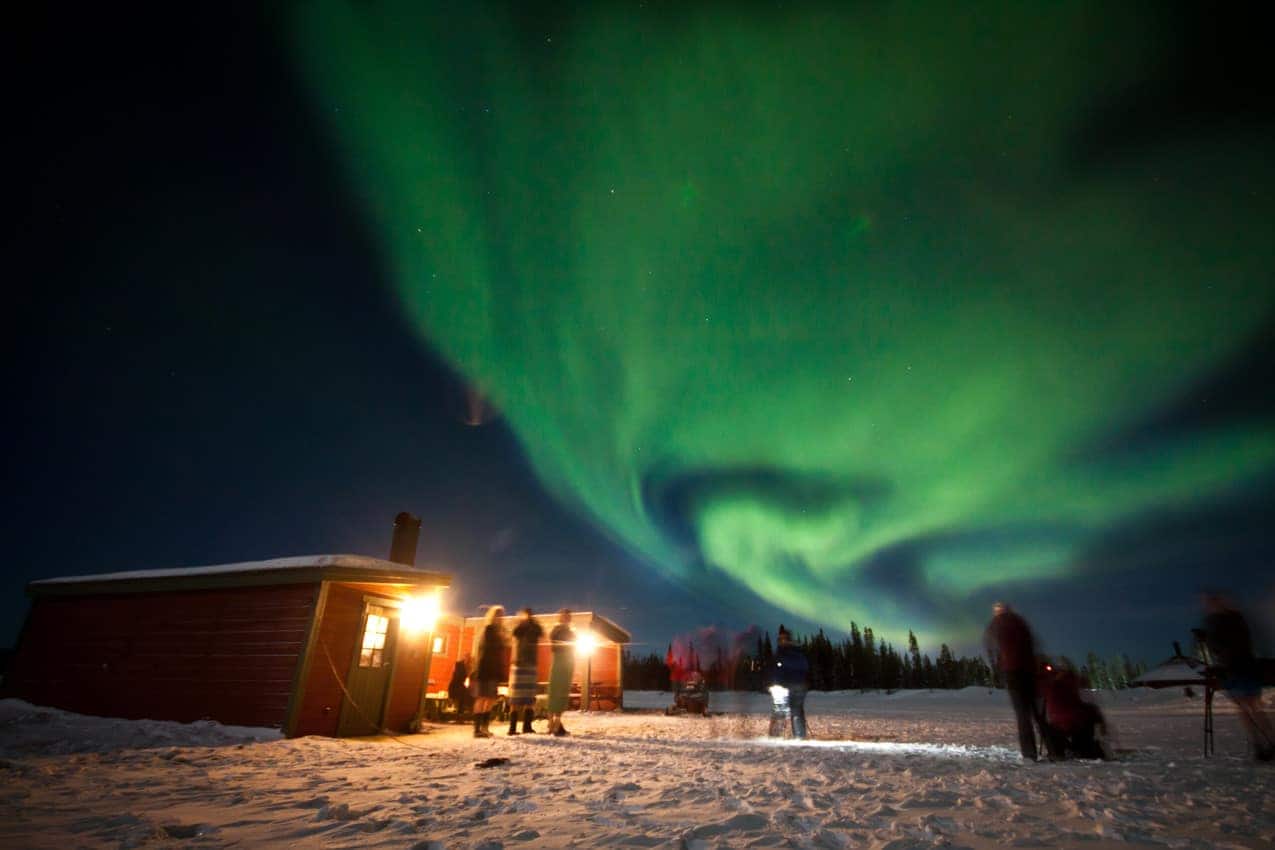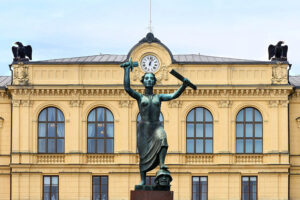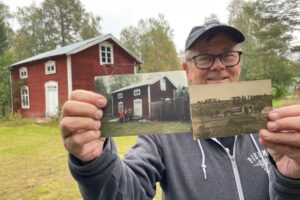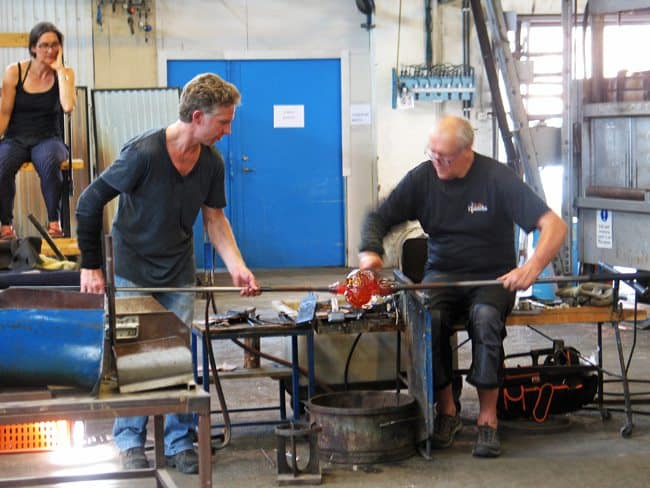
Kosta Boda is a Temple Devoted to Glassblowing in Glasriket, Sweden
By Susan McKee
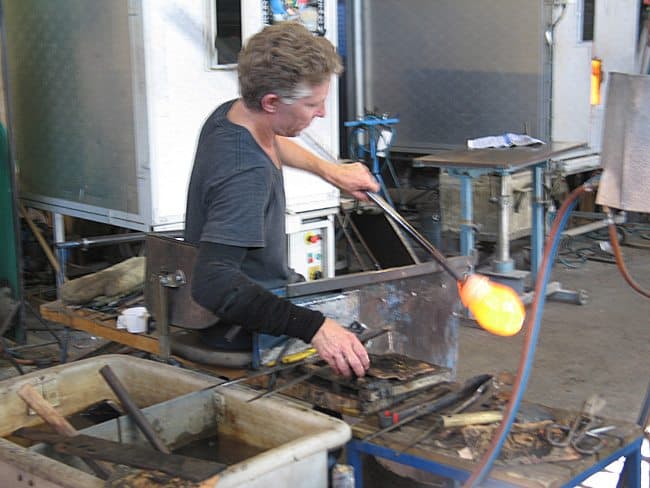
The heat from the furnace (which reaches 2700° F) could be felt from the bleachers where we sat in the Kosta Boda factory in Sweden, watching the glassblowers at work.
Taking a glob of molten glass from a nearby container by means of a long rod, the lead artisan put it into the glory hole — twisting and turning it until the consistency looked right to his practiced eye.
Shaping the Glass
Then, the delicate work of shaping the glass begins with age-old implements made of wood, leather — even thick pads crafted from layered newspapers. A bit of turning and smoothing, then back into the furnace.
After several passes, the glassblowing commenced: heating, blowing, heating, blowing again. Suddenly, the intended shape emerged, and the second workman joined the creative dance as the finished vase was knocked from the pole and set aside to cool.
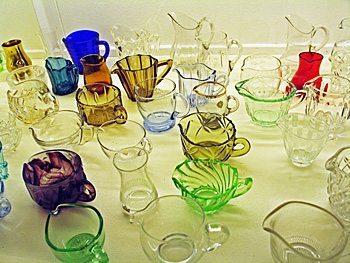
Then the whole process started again.
Sweden’s Glasriket — Kingdom of Crystal — seems out of place. Isn’t Murano, Italy, the epicenter of glass production in Europe? Well, maybe for the frou-frou fancy stuff (think: elegant, elaborate chandeliers).
This Scandinavian country produces glass items that are both useful and decorative — and it has since the 16th century.
While early glass production was for church windows or the tables of the nobility, the confluence of an abundant supply of firewood, lots of sand, and abandoned ironworks in the region of Småland drew glassworks to this southeast region of Sweden (and the displaced ironworkers became glass workers).
Founded in 1742
Kosta Boda, started in 1742 and still producing glass, was founded on an old ironworks site. The name is a combination of the last names of the founders, Generals Koskull and Staël von Holstein. For the first 150 years, Kosta specialized in “utility” glass: window panes, bottles, and drinkware.

After the General Art and Industrial Exposition of Stockholm in 1897, Kosta realized they needed their own glass designers to set their products apart.
These days, they are known for “signed” glass art — and the company owns an art hotel to show it off.
Hotel is a Living Gallery
The Kosta Boda Art Hotel is a “living gallery” — filled with glass art made by Kosta Boda designers, and all of the artwork is for sale.
Besides, they’ll hand you a 10% discount coupon for the glass shop and factory outlet across the street.
Hint: if you buy glass there, have Kosta Boda ship it to your house (you’ll save not only the discount but also the VAT, which is usually more than the shipping cost).
Follow the Signs to Hytta
Before you go shopping, check out the exhibition hall with more than 250 years of glass on view. Then, follow the signs to “Hytta” — the blowing room — and watch the production.
There also are sections where glass is blown into molds and assembled through teamwork into delicate stemware.
Almost liquid when it’s molten, glass cools into a hard material that’s both utilitarian and decorative. Silica and lime are transformed by high heat into a malleable material — one that can glaze windows, form a wineglass or tease the eye with the artful play of light and color.

Start in Växjö
Växjö is a good place to start a visit to the Kingdom of Glass. The Swedish Glass Museum showcases a vast collection of works spanning ancient times to the present day (including the vase, above), and the intricate leaded glass window (below).
You’ll learn how the market has shifted over the years, with glassmakers opening, prospering, merging, and going out of business over the centuries.
To see the surviving glassworks (and there are dozens), head east out of Växjö and pick up the KulTuren, a 90-mile sign-posted route through the Emmaboda and Lessebo municipalities of southeast Sweden.
You can get a brochure with detailed map at a Tourist Information Office or find it online.
Bergdala Glasbruk
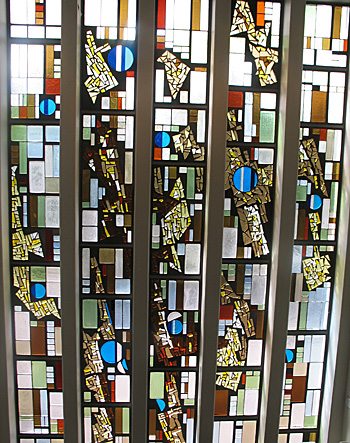
The Bergdala Glasbruk is a small workshop where you can watch glassblowing and then spend some time seeing their finished products in the adjacent shop.
Skrufs Glasbruk has a museum of its production over the years — it opened in 1897 — as well as a workshop where visitors can watch glassmakers.
A bonus for those traveling with children: there’s a playground outside between the museum and the shop.
Another “glass-centric” activity you might enjoy Hyttsill (that’s hot-shop herring). It’s a meal based in tradition: glassblowers would use the remaining heat from the glass furnaces to cook their evening meal.
These days, it’s a tourist treat with presentations by master blowers (plus a chance to try your hand at glassblowing — yes, really–plus listen to live musical entertainment and have dinner.
Think: herring, bacon, sausage, baked potatoes, lingonberry jam, and Småland cheesecake — all served on long communal tables set up in the hot shop.
I went to a Hyttsill in Kosta Boda, but there’s also one at Målerås (needless to say: book ahead to guarantee a seat at dinner).
Glassblowing is an ancient art, and seeing these craftsmen create beautiful objects in Sweden made for a fascinating excursion.
- Sicily’s Special Places: Here are Five Favorites - March 12, 2020
- A Summer Cruise in the High Arctic - September 26, 2019
- The Tangled Cultures of Goa, India - March 8, 2019



